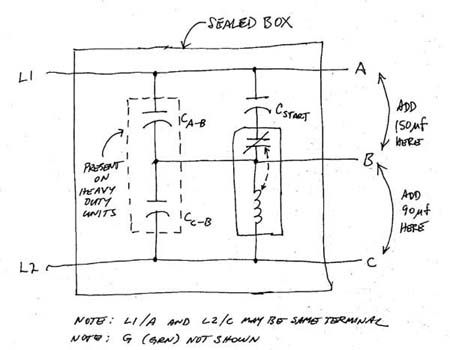Several months ago (3/20/05)it was recommened that I add 150mfd & 90 mfd capacitors to my rotary phase converter. The 150mfd capacitor was to be added across the leg that contained the start capacitor(s), and the 90 mfd was to be placed across the other leg.
My problem is I am using a Cedarberg, Solid State Phase Converter (Series 1a, Model 1600A) as a "start" (capacitor). This is sealed unit. Is there any way of determining which leg contains the "start" (capacitor)?
My problem is I am using a Cedarberg, Solid State Phase Converter (Series 1a, Model 1600A) as a "start" (capacitor). This is sealed unit. Is there any way of determining which leg contains the "start" (capacitor)?


